Up Next
Floria Gonzalez’s Blazing Visions of Destruction and Renewal
The Mexico City-based artist paints eerie scenes where past and present collapse. Her work is now on view at JO-HS in New York.
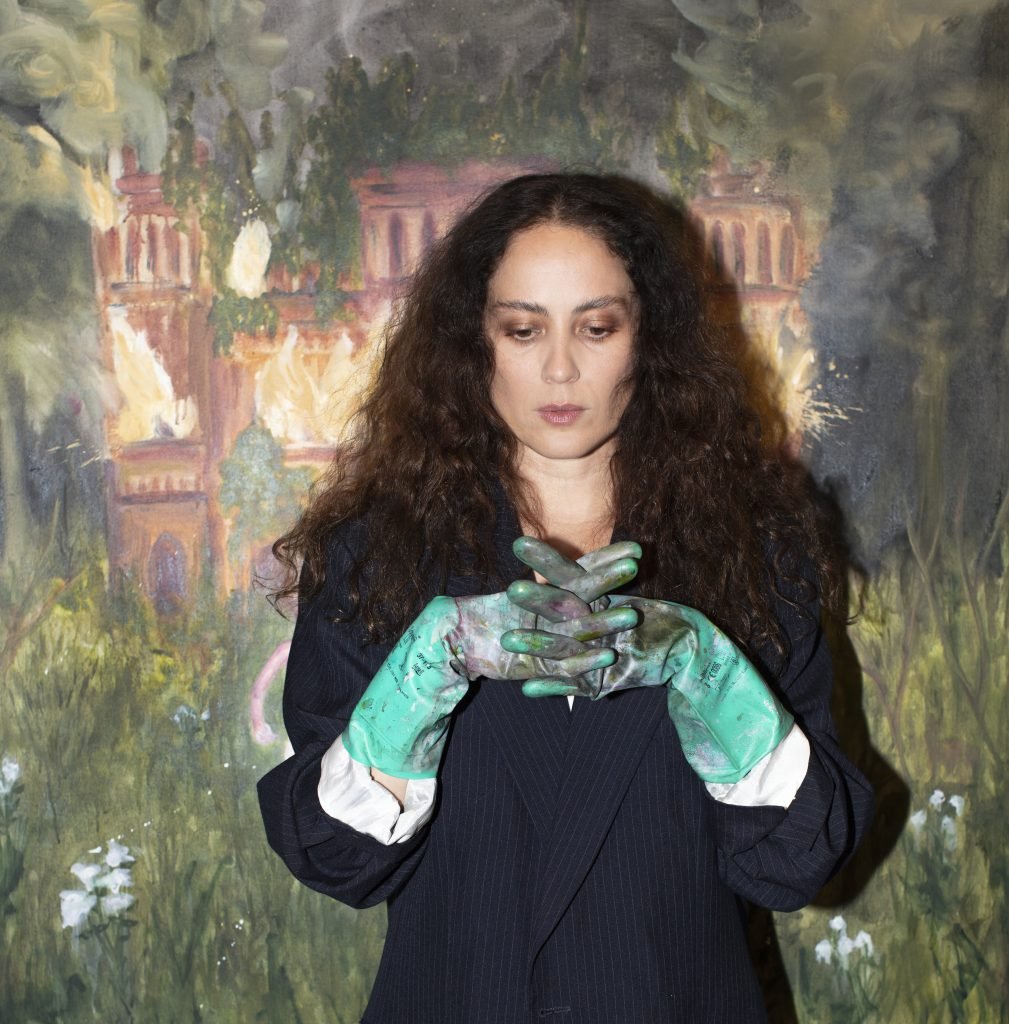
Floria Gonzalez has worn many costumes in her life—ballerina, girl group singer, photographer, and filmmaker—but she has only recently stepped into the role of her lifetime.
“I’d always been very envious of painters and the liberty they have creating anything,” Gonzalez said from her studio in Mexico City. The artist, who was born in 1980 in Monterrey, had painted with varying degrees of intensity since childhood. Her professional life, however, was firmly established in photography and film (she maintained concurrent art and commercial practices). By her ’30s, she had become well-known for her elaborately staged sets and keen eye for color. The work was fulfilling and challenging, but it had become increasingly hard for Gonzalez to ignore a nagging desire to pick up a paintbrush.
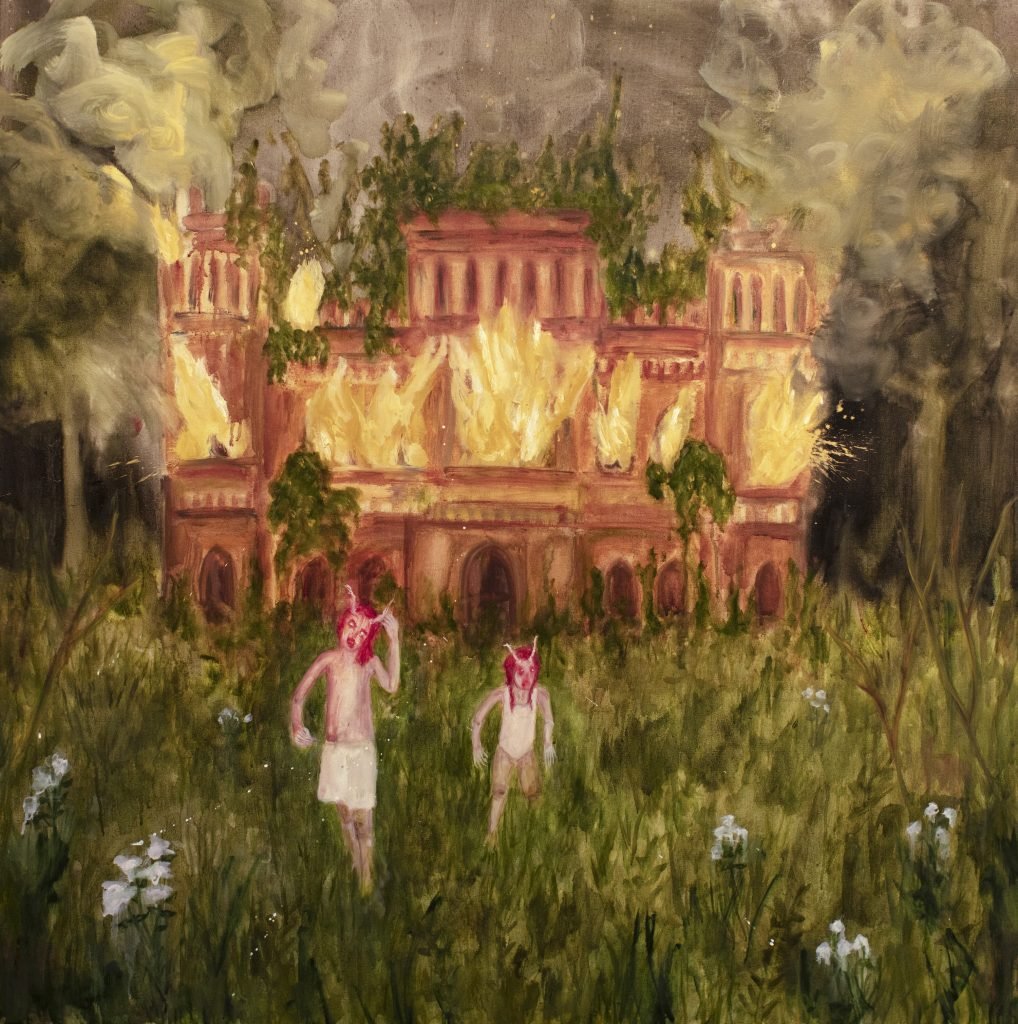
Floria Gonzalez, Experiences in Pompeii (2023). Courtesy of the artist and JO-HS.
Eventually, she did just that. “I was missing the freedom of saying ‘Hey, I need a burning boat!’ I couldn’t get that in photography,” she said. “Painting became a way for me to access ideas I couldn’t reach before.” Right now, Gonzalez’s work is on view in a group show “Techne” at JO-HS in Tribeca (through June 1).
Over the past few years of painting, Gonzalez has tapped into a new well-spring of uncanny imagery. Her paintings—oil on canvas compositions—are eerie, lush scenes that feel plucked from a dystopian dreamscape. The works often follow narrative or thematic threads. A recent series, “The House of Broken Time,” was inspired by the frescos of Pompeii, preserved for perpetuity by ash from a volcanic explosion. “I was looking at images of Pompeii on the Internet, and the colors were altered by my screen,” she explained. “At the same time, I realized, the colors had already been changed by time. Looking at old photographs as inspiration for my paintings became a way for me to experiment with ideas of time.”
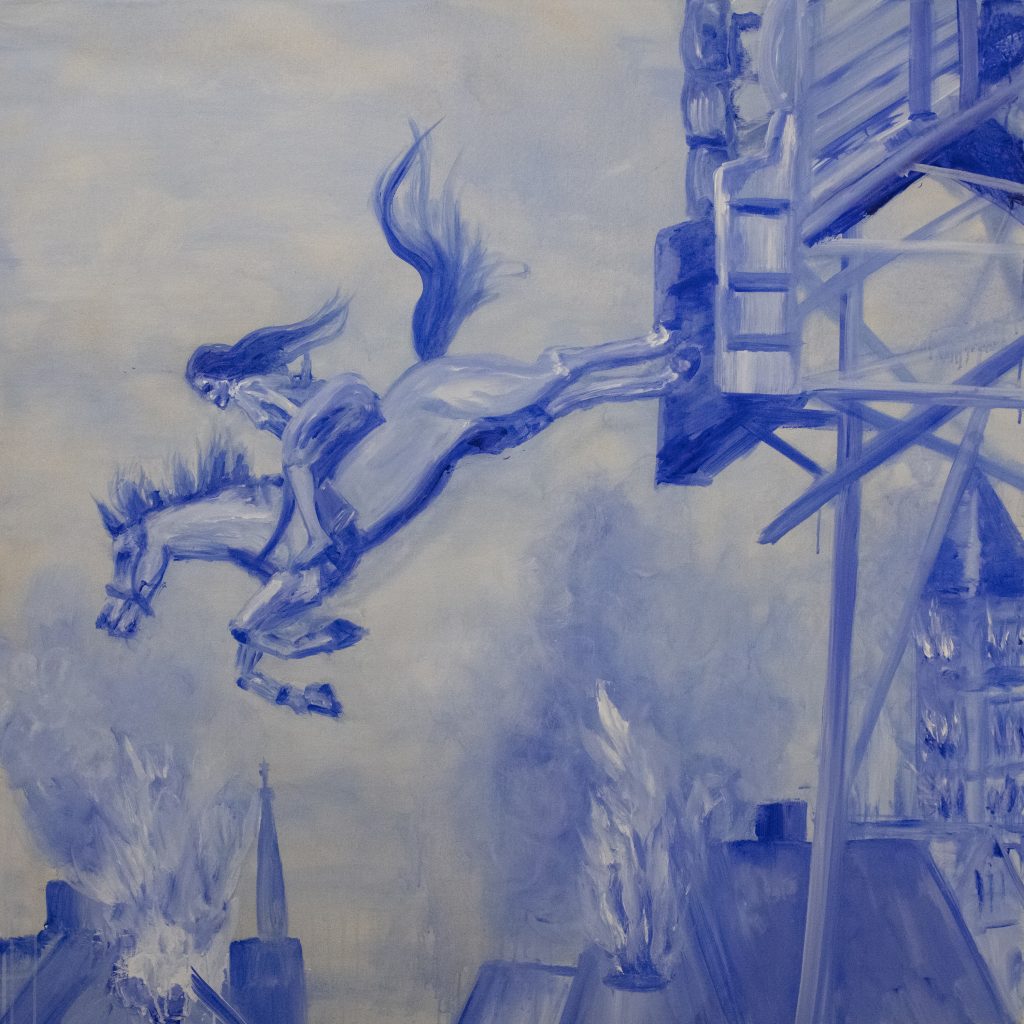
Floria Gonzalez, Dive (2023). Courtesy of the artist and JO-HS.
The “House of Broken Time” series is moody, cinematic, and often anachronistic. In one painting Experiences in Pompeii, a mansion burns in a field, orange flames licking high into the sky. Two figures, girls maybe, but, upon closer look they also have horns and could be demigoddesses, stagger through the tall grass. The figures are ambiguous. Are they innocently fleeing or are they the arsonists? Destruction, particularly fire, is her most recurrent motif.
“I love to paint burning houses,” Gonzalez said. “Each house I burn has a different meaning, depending on what I’m going through. Sometimes you have to burn the past and try something new. There are times when all our ideas stop working and it’s time to start anew.” There are themes of resurrection underneath the ashes. “Either you evolve or you stay where you are,” she said. “I’m always reaching toward the evolving part of life. Which is why I burn so much.”
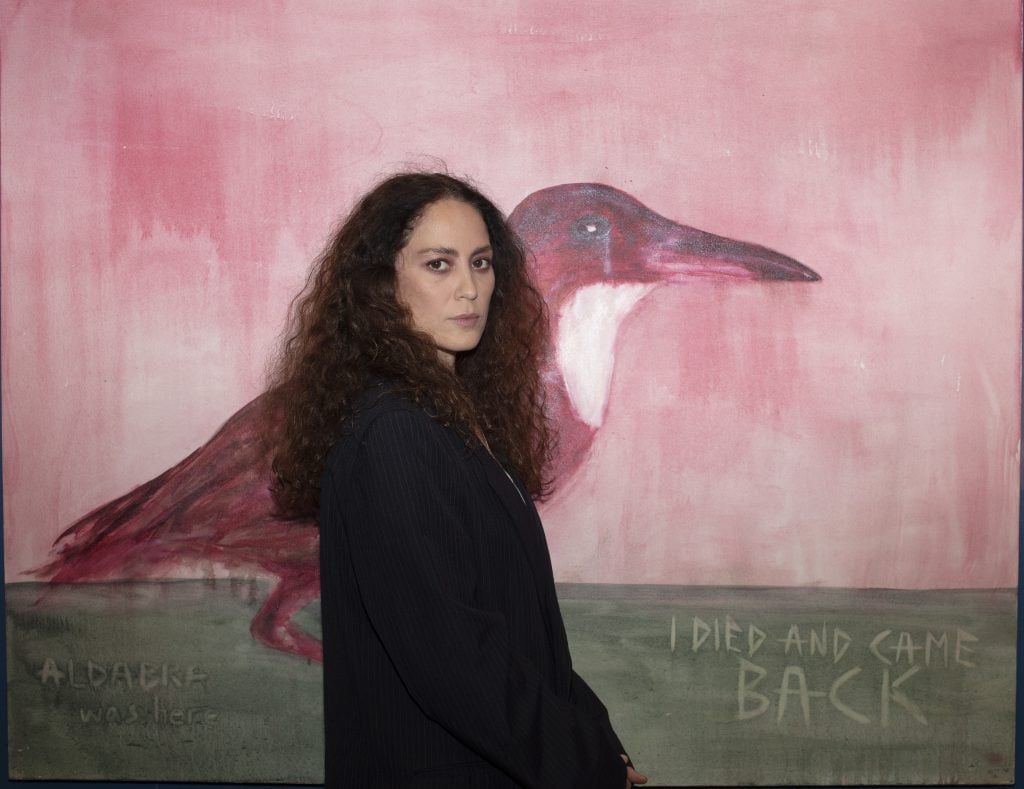
The artist Floria Gonzalez.Courtesy of the artist and JO-HS Gallery.
Late last year, the JO-HS gallery, which has its flagship in Mexico City, hosted “Mixed Tape” the New York solo debut of Gonzalez’s work. Gallery founder Elisabeth Johs was drawn to Gonzalez’s synesthetic approach to art-making. In “Mixed Tape”, each painting acted as a visual “track”—Gonzalez made each painting while listening to a single song on repeat. She channeled her sensations and imagined narratives into the canvases. The song choices, dating from 1960 to 2023, evoked scenes at once retro and futuristic. One painting, titled after Patsy Cline’s plangent 1961 hit song “Crazy” pictures a mechanical dog and robot figure before a mystical gray castle in a blue forest. For Gonzalez, the song’s line “I’m crazy for trying and crazy for crying, crazy for loving you,” conjured up questions about the emotional awareness of artificial intelligence. Ai-Da, an ultra-realistic AI robot, that paints and draws based on cameras in her eyes, particularly fascinated and inspired Gonzalez. “A sci-fi element definitely exists in my work,” she explained.
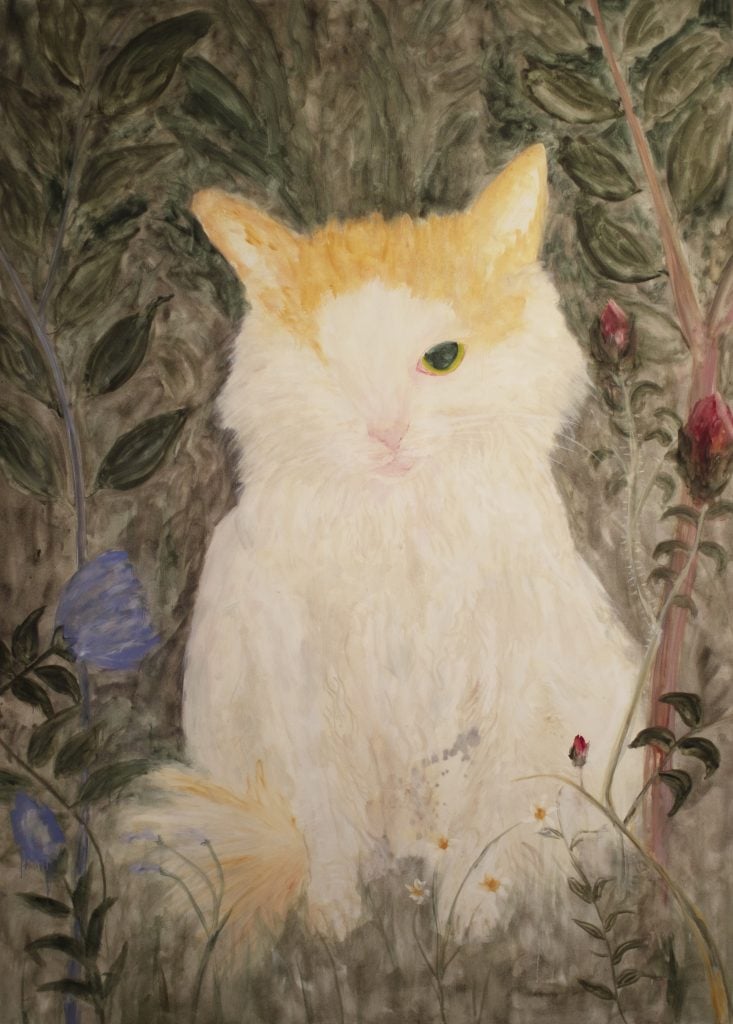
Floria Gonzalez, You (2023). Courtesy of the artist and JO-HS Gallery.
Music and cinema reverberate throughout her oeuvre. “I came to Mexico City when I was 15,” Gonzalez said. “I fell in love with the city. I was singing with two friends in a girl band. We signed a contract with Universal Music and made very pop, very ‘90s music.” Years later she would go on to found Floto Studio, where she directed music videos and documentaries for prominent musical artists such as Leonel García, Natalia Lafourcade, and Torreblanca, among others.
“Working in photography and film, I was super precise about color and I learned a lot about composition and color and light through photography,” she said, noting her tendency to describe her paintings as “long shots” and “close-ups.”
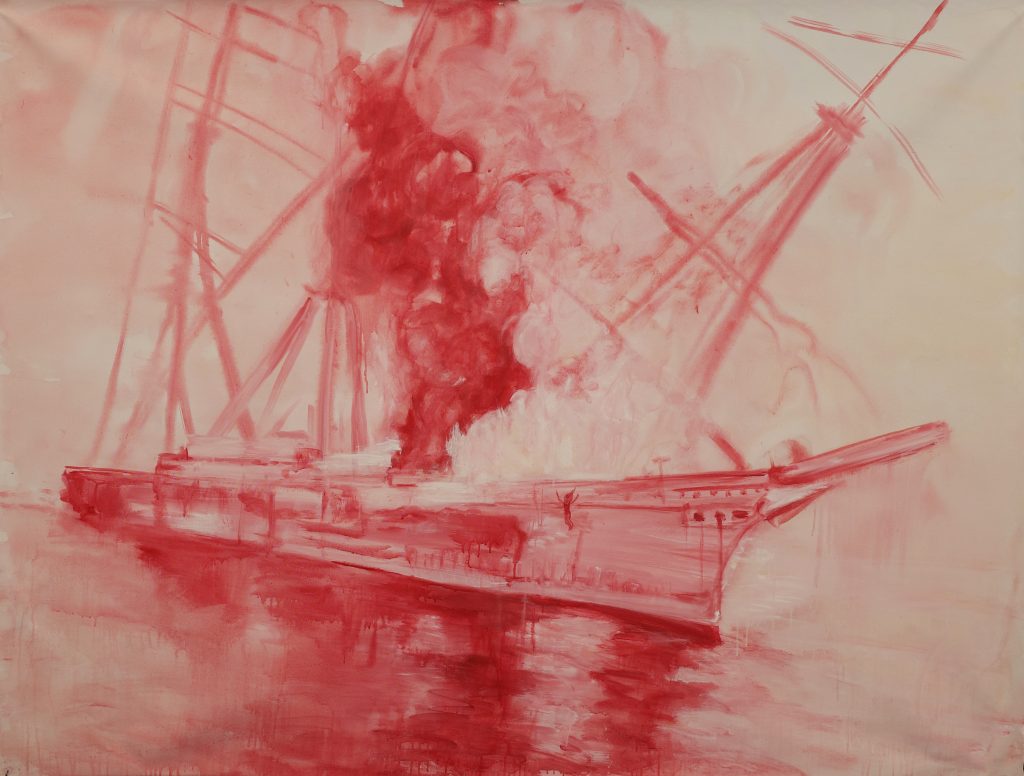
Floria Gonzalez, Scuttle Buttin (202). Courtesy of the artist and JO-HS Gallery.
Speaking of color, Gonzalez’s newest series, “Surveillance of the Gods” is painted in limited palettes—blues and whites, or pinks and whites, that give the works a toile-like effect. It’s a self-imposed limitation Gonzalez says has her “craving color again.” Here, tall ships seemingly plucked from a J.M.W. Turner painting flail against fires. In other works, 19th-century dandies enact a luncheon on the grass and stare out from the canvases with saucer-eyed expressions of oblivion while a comet careens toward Earth behind them.
For Gonzalez, the beauties and disasters of today are unfolding across the ages, the past living in the present, and the future intervening in the past. “I love to think about quantum physics and mechanics,” she said, with palpable pleasure. “Time and energy and consciousness…the many layers of reality are like the layers of a painting. Everything is happening at the same time. There are infinite possibilities. But there are also these physical and emotional moments and realities. These exist in our universe and exist within a single painting.”
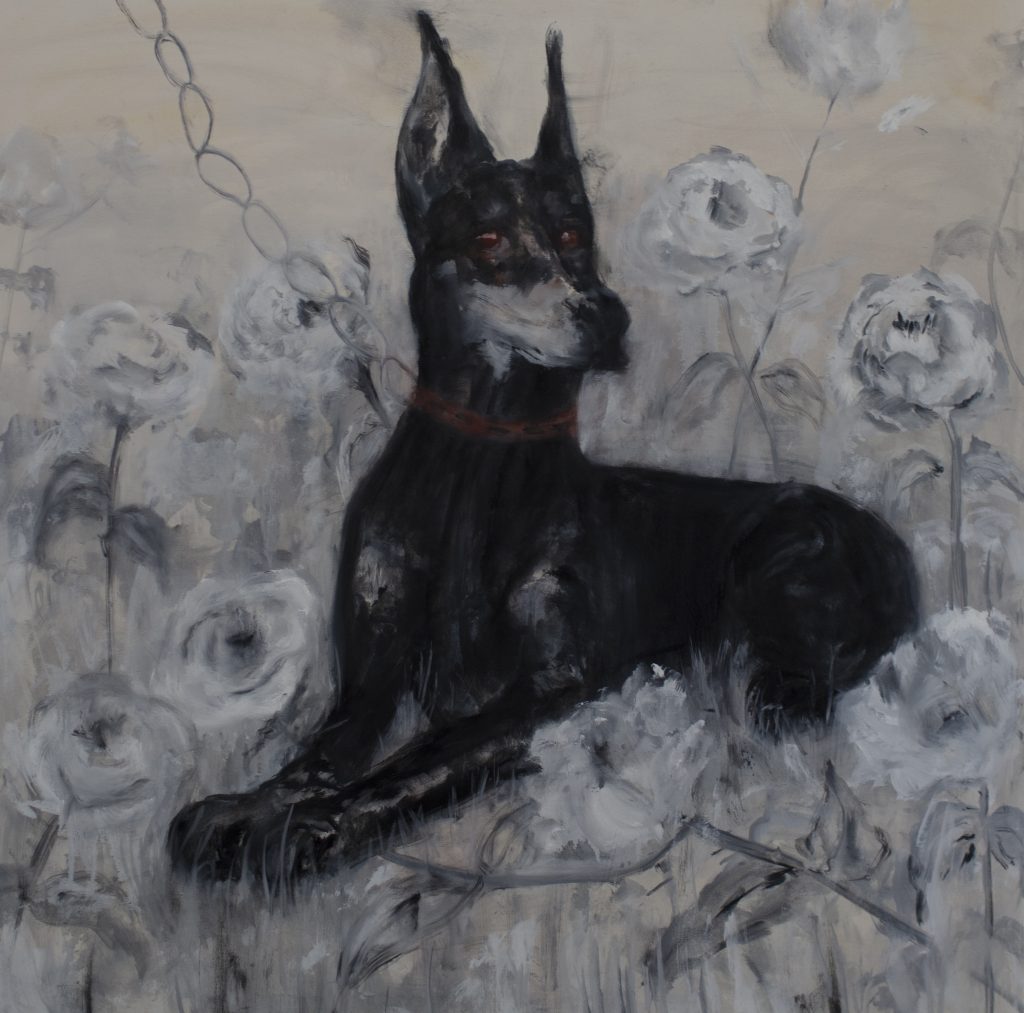
Floria Gonzalez, Cuidado con el perro (2023). Courtesy of the artist and JO-HS Gallery.





